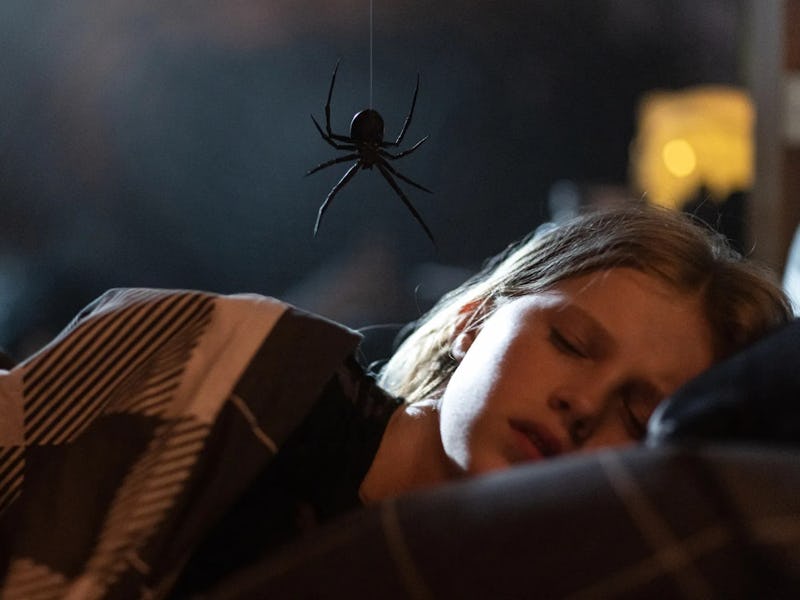Sting is A Classic Creature Feature Trapped By Its Own Design
The arachnophobia horror movie spins a too-tangled web.

Common fears are all over horror movies. Afraid of clowns? There’s now a whole franchise about that. Afraid of the ocean? It’s easy to see why after Jaws. The fear of heights has been covered over and over again, from Vertigo to Fall. Nowadays, the more niche fears are getting exploited, like dolls in Annabelle and even swimming pools in Night Swim.
But sometimes it’s worth going back to the old standards. That’s exactly what writer/director Kiah Roache-Turner attempts to do with Sting, a classic arachnophobia creature feature that boasts cool body horror, but ultimately doesn’t make up for an identity crisis.
Sting follows Charlotte (Alyla Browne), a precocious tween whose mom and stepdad are too busy with jobs, family, and other projects to focus on her. She finds solace in a tiny spider she keeps in a jar. When she looks up at her bookshelf and sees a copy of The Hobbit, she decides to name the creature Sting, after Bilbo’s sword. (Presumedly, she could have seen The Police’s Greatest Hits and come to the same conclusion.)
As far as horror movie creatures, Sting is pretty cool: it somehow whistles when it’s hungry, grows exponentially, and quickly ramps up from eating bugs to eating birds to eating... larger fare. On its own, it could be great material for a short film. But in order to stretch this story to 91 minutes, more material needed to be added, which is where the movie loses the plot.
For much of the runtime, Sting doesn’t feel like a creature feature with family drama elements. Instead, it’s a family drama that contains conversations like “I’m losing it!” “No, you’re losing us!” interrupted by a freak giant spider attack. Even the comic relief character, an exasperated exterminator named Frank (Jermaine Fowler), has lines that feel about as nuanced as a brick through a window. “Hey lady,” he says at one point, “I’m gonna find what killed your bird, and when I find it, I’m gonna exterminate its ass.”
All of this could be indicative of a self-aware camp horror that’s very aware of how over-the-top it is, but instead of adding to the experience like self-aware horror franchise Scream, its desire to be a scary horror movie and its desire to prove it’s in on the joke are constantly at odds with each other.
The family drama of Sting gets in its own way.
It’s a paint-by-numbers creature feature, but it goes over the lines in a distracting way. The film is littered with groan-worthy jumpscare fakeouts, or obvious creature weaknesses that pull focus from the clever plot twists and action sequences. That can be a strength, but the hesitancy to commit to the bit and embrace the fact that a movie about a giant spider that whistles and clicks is going to be a little weird, makes everything feel as obvious as the emotional stakes.
If you know how to buy into this movie and meet it on its level, then Sting may be as scary and affecting as it wants to be. Unfortunately, from the surface, it looks like two movies stitched together into one, and the total is not the sum of its parts.